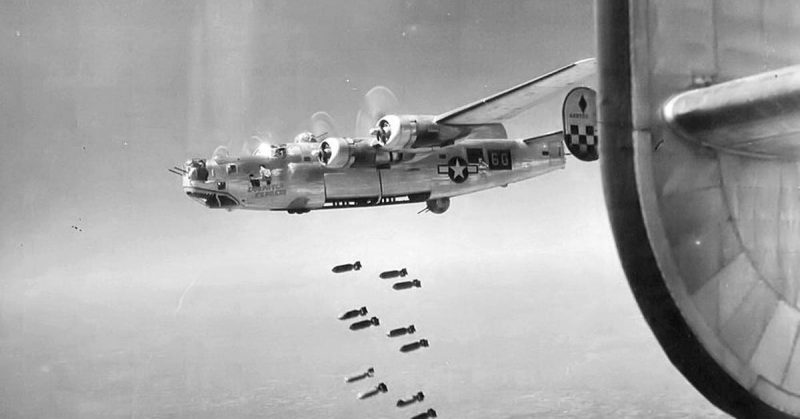The last letter Fredrick Siegrist’s father received from his son was dated June 11, 1943, written on stationery from Colorado’s Lowry Field, and exuded the excitement of a youthful soldier on the edge of something far bigger than himself.
‘It’s a chance in a lifetime’ he said.
Sixteen months earlier America had been drawn into the Second World War. Siegrist, 19, wrote that he’d been accepted into flight school, learning to become a gunner and getting his wings.
In his letter he begged his father, Charles, not to share the news with his mother if he thought she would be unduly worried.
“Wish me lots of luck, Daddy,” he wrote. “The school is tough, and they wash you out for the smallest thing.” He wrote that he needed all the luck possible.
Over 73 years after Siegrist mailed that letter to his folks in Norfolk, Va., his niece, Ann Marie Jackson, read it aloud in her Chesapeake kitchen.
“He thought it was a big deal. It was, but very fleeting,” said Jackson, who was only a few months old when the letter was written.
Over 400,000 American service personnel died in the Second World War according to the Defense Personnel Accounting Agency; as many as 73,000 of them remain unaccounted for.
Siegrist, an Army Staff Sergeant, is one of those whose bodies was not recovered after his plane disappeared following a bombing mission in Europe.
Now, a special team of Navy divers attempts to recover wreckage off Italy’s coast and a request from the Defense/POW Accounting Agency, has kindled hope that there finally may be closure for the family.
After her mother and grandmother had died, she lost hope of finding anything further relating to her uncle’s disappearance, Jackson related.

Army documents recorded Siegrist as one of 10 crew members on a B-24 Liberator from the Army’s15th Air Force that went down on May 3, 1944, off the Italian coast in the Tyrrhenian Sea, after being damaged by enemy aircraft.
A single crew member survived the incident and returned to active duty. Another, later identified using dental records, was recovered from a grave dug by Germans.
According to available records, in 1949, the Army declared Siegrist dead, following a search by teams combing the coast which failed to find additional remains.
The Army returned Siegrist’s personal effects, including his leather wallet and wings pin to his mother in the months following his disappearance.
Jackson learned of Siegrist’s service in point form as she grew up: he’d gone off to war, was missing in action and was assumed dead. Following her mother’s death 30 years ago, Jackson assumed the role of family historian.
She did research on the Internet three to four years ago, which revealed her uncle’s name on a memorial in a cemetery in Florence, Italy, but gave up hope of finding additional information.
That was the end of the matter until late in 2015 when, surprisingly, the Army contacted her with news that they were researching in the region where Siegrist’s Liberator crashed. She was requested to forward a DNA sample.
The story may have ended there, except that in November, the Virginian-Pilot newspaper reported the attempts of the Navy’s Mobile Diving and Salvage Unit Two to study and retrieve debris of a Second World War plane, The Virginian-Pilot reported.
Jackson recognized the date of the crash.
The Italian Coast Guard told the U.S. about the debris six years ago. It lies approximately 80 feet below the surface in an area as big as three football fields, complete with gun turret and bullet-peppered wing, explained petty Officer 2nd class Christopher Petersen, who assisted in surveying the wreckage.
